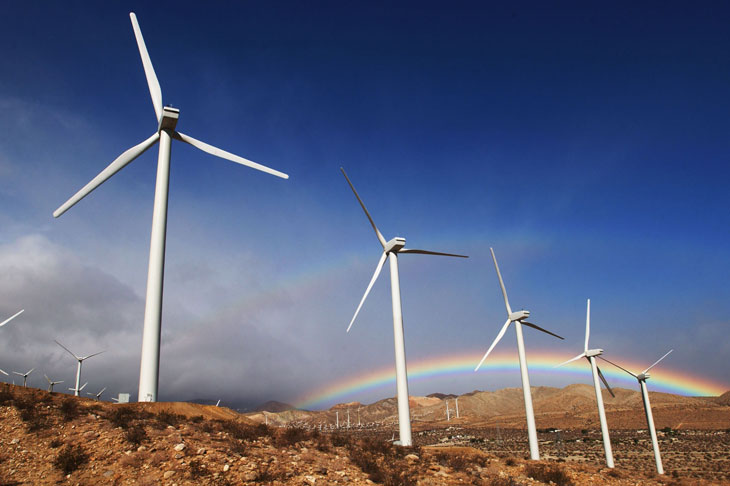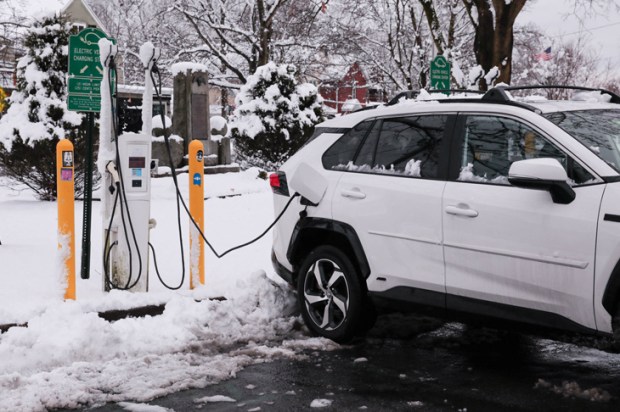With the energy crisis prompting governments everywhere to turn coal plants back on, wiping out many years of hard won emission reductions in advanced economies, the major limitations of renewable energy have now, at last, been acknowledged by all.
Well, almost all, with Victorian government energy minister Lily D’Ambrosio in late June ruling out paying coal and gas companies to keep them operating as part of a proposed national capacity market, saying that the state’s new offshore wind projects will ‘blow any shortfall out of the water’.
Never mind that the bulk of the advanced economies, many with far higher dependence on renewables than Victoria, have such capacity markets – ideological demands must trump operational experience.
Chief among the lessons about those limitations is the phenomena now known as ‘wind droughts’. Late in 2021 as delegates in the annual climate summit, held in Glasgow that year were noisily demanding more renewable energy, the UK had to turn on mothballed coal-power plants because of a shortage of gas and a wind drought.
In an article on the Australian edition of the academic site the Conversation published in October 2021 a researcher in climate risk analytics at the University of Bristol in the UK, Hannah Bloomfield, says that the period of still weather around the time of the Glasgow conference resulted in the power company SSE reporting that its renewable assets produced 32 per cent less power than expected.
In the article Dr Bloomfield says these ‘wind droughts’ can be classified as an extreme weather event, like floods and hurricanes. Researchers in the UK have shown that that periods of stagnant high atmospheric pressure over central Europe, lead to prolonged low wind conditions over a wide area and those conditions may be ‘difficult’ for power systems in future. Further, Dr Bloomfield notes, it is important to understand just how such events occur, as that means they can be forecast and the grids prepared for them. There is no discussion about just how the grids might be prepared for such droughts and, in any case, scientists have enough problems forecasting the frequency and severity of cyclones during cyclones seasons, and are continually taken by surprise by floods, despite studying those extreme events for decades.
But it is known that just like rain droughts, wind droughts can persist for a long time.
During a wind drought in the UK in 2018, wind made no contribution to the UK grid at all for nine days and only slight contributions for another two weeks. In the wind drought of late 2021 noted earlier, there were days when wind made no contribution at all.
Then there are the much shorter periods, perhaps ranging from an hour or so up to a day that can also be found by anyone who examines wind’s contribution to total energy supply to the UK grid over time. However, the short and long-term wind drought phenomena has received some academic attention in the UK, it is difficult to point to any systematic study of the problem in Australia.
A few concerned citizens have looked at the easily accessible figures for wind production on the National Energy Market, the grid for Australia’s east coast, to find a number of periods where the whole of the NEM was in wind drought for periods ranging from a few hours up to 33 hours. But that study was for just one year, 2020. More extensive research could well find wind droughts of much longer periods.
Activists may sneeringly dismiss all of this as having not been done by properly qualified scientists. Very well, where is the independent analysis done by academics with qualifications of any kind? While they are on the job those same academics can work out just how much storage capacity would be required to tide the national market over for a day and a half. The NEM has north of 50,000 MWs (50 GW) of generating capacity. If for the sake of argument, we assume that an average of half that is used (more during demand peaks and less during troughs) in any given period, then the market may need around 900,000 megawatt hours to get through a 36-hour drought without fossil fuel plants.
The giant water battery known as Snowy Mountain 2.0 should store about 350,000 MWh, when it is finished and assuming that it can find enough fresh water, which means the NEM might need three or four Snowy 2.0s at a bare minimum, although only one is being built.
Batteries don’t count. The Hornsdale Power Reserve Battery built in South Australia in 2017 with considerable fanfare, for example, cost $90 million but stores just 125 MWh. The photovoltaic panels now on suburban roofs all over Australia are not subject to wind droughts, but they are at their peak around the middle of day, do not work well on cloudy days or at all at night, and the excess energy still has to be stored.
To make matters worse, grids have to be designed to cope with worse case scenarios such as a very hot day, which also happens to be a calm, cloudy day. Perhaps enough power might be stored to see the grid through one such event, but then when the Snowy projects have expended one load of fresh water through turbines to generate power, it may take days to completely recharge, so to speak, by having the water pumped back into it. What happens if another extreme event occurs soon after the first?Activists insist that all these problems can be overcome simply be building more wind turbines, particularly offshore turbines as planned by Minister D’Ambrosio. In the days of sail, ships might be becalmed for days, but the trade winds which blow down Bass Strait are thought to be different. Well, are they? King Island, well out in Bass Strait, has the King Island Renewable Energy Integration Project, part of which is a wind farm, plus solar power as a supplement to the island’s long-standing diesel generators. Material produced by the owner Tasmanian Hydro estimates that renewable energy now accounts for 65 per cent of the island’s power demand.
That’s fine but what about the other 35 per cent supplied by diesel? Why couldn’t the wind farm supply all of the island’s needs, and was the outcome worth the $18 million spent on the project, all to service the island’s 1,600 residents? The Victorian government could at least produce some material apart from activist assurances that its projected reliance on offshore wind farms will be anything but a disaster.
Got something to add? Join the discussion and comment below.
Get 10 issues for just $10
Subscribe to The Spectator Australia today for the next 10 magazine issues, plus full online access, for just $10.
You might disagree with half of it, but you’ll enjoy reading all of it. Try your first month for free, then just $2 a week for the remainder of your first year.














Comments
Don't miss out
Join the conversation with other Spectator Australia readers. Subscribe to leave a comment.
SUBSCRIBEAlready a subscriber? Log in